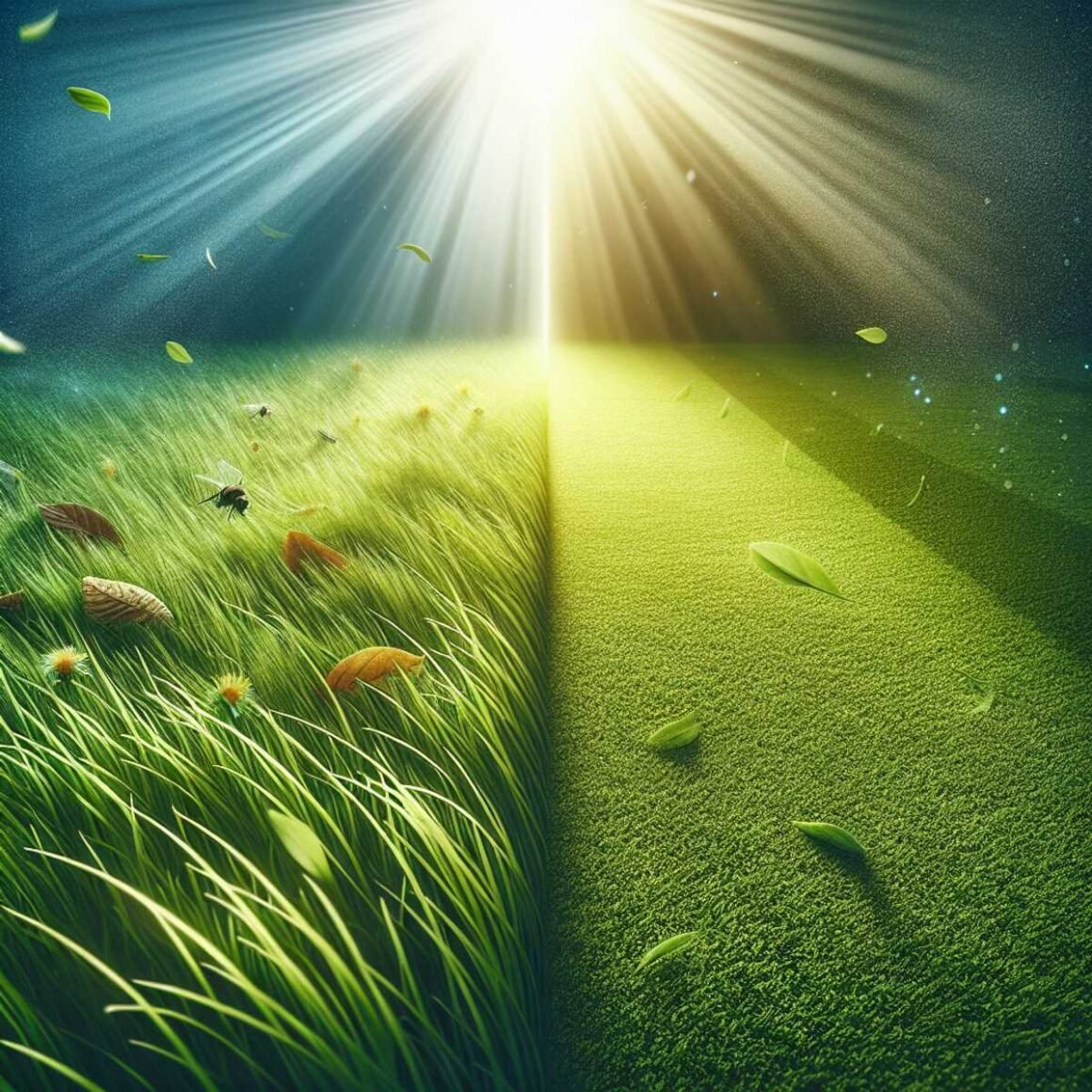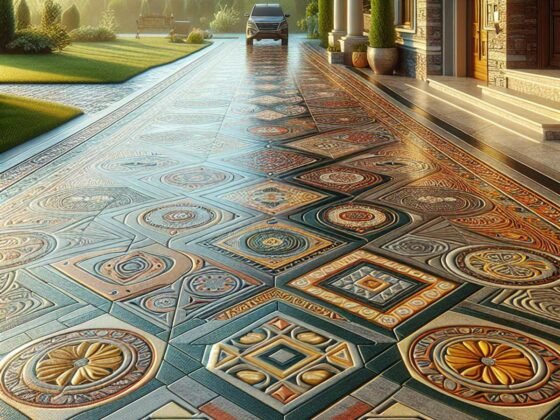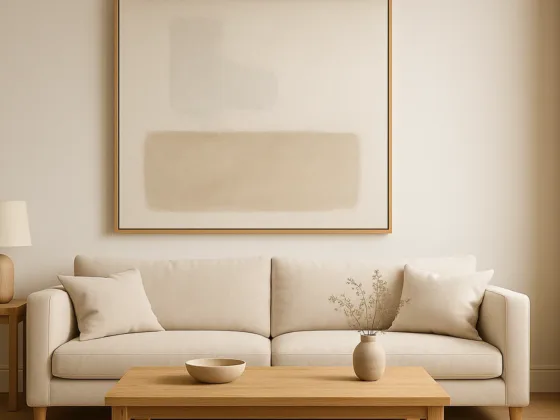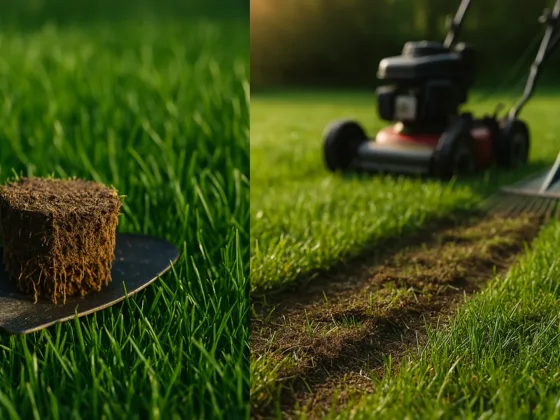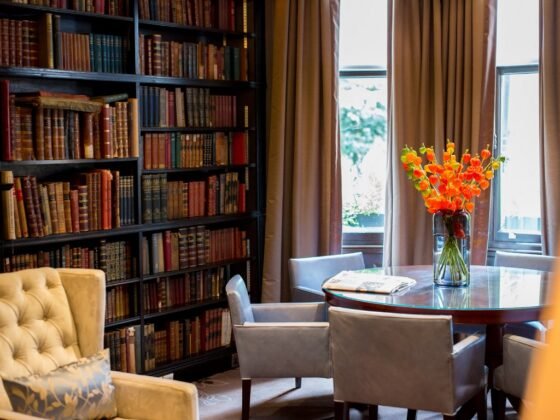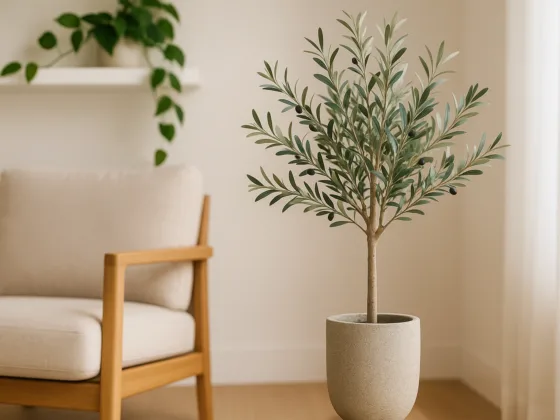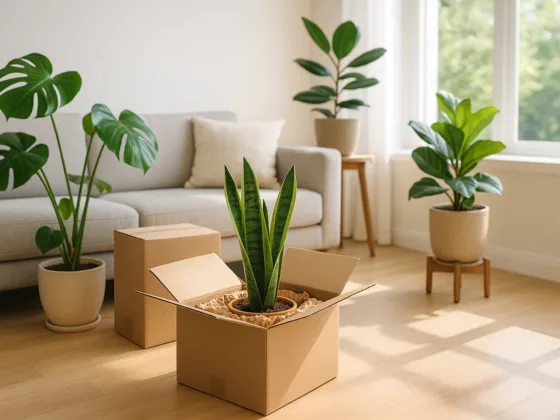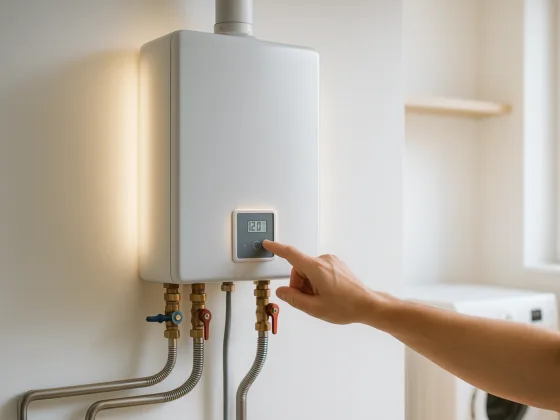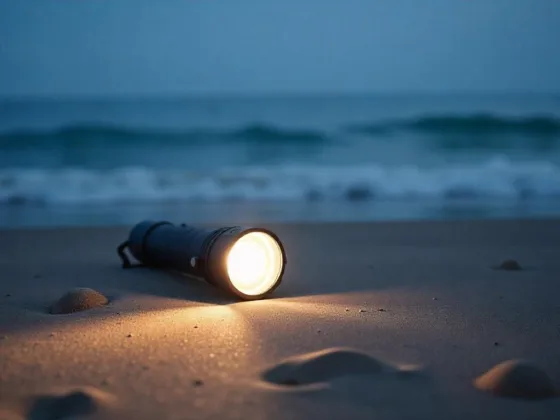Table of Contents Show
Picking the perfect lawn for your yard can be tricky! There are two main choices: fake grass (also called artificial grass) and real grass.
Each kind has its ups and downs, so it depends on what you want for your yard. We’ll explore both to help you decide which is best for you!
Understanding Artificial Grass
What is Artificial Grass?
Ever wondered if there’s a kind of grass that never needs watering? That’s artificial grass! It’s like a super cool fake lawn made out of special threads, kind of like really strong yarn. These threads, called polyethylene, polypropylene, or nylon, are woven together on a backing, like weaving a rug.
To make them extra tough, they even get special treatment to protect them from the sun and rain. So basically, it’s like a superhero version of grass that can handle anything!
History and Evolution
Fake grass isn’t new; it’s been around since the 1960s! Back then, it was mostly used in sports stadiums. But guess what? Just like video games, fake grass has gotten way cooler over time.
Now, thanks to science, it feels softer and looks more real, making it perfect for backyards, playgrounds, and even fancy office buildings! Companies like Dubai Artificial Grass help bring these amazing, realistic lawns to homes and businesses everywhere.
How It’s Made
Imagine you don’t have real grass in your backyard, but you still want it to look green. Artificial grass is like a big rug for your yard. Instead of yarn, it’s made of fake grass fibers.
These fibers are punched into a special fabric that holds them upright, like tiny toothpicks! They are then cut to look like blades of real grass, short enough so you won’t get tangled up in them.
Just like a real grassy field, fake grass sometimes needs a little padding. Sand or rubber crumbs are sprinkled on top to make it soft and comfy for your feet to play on!
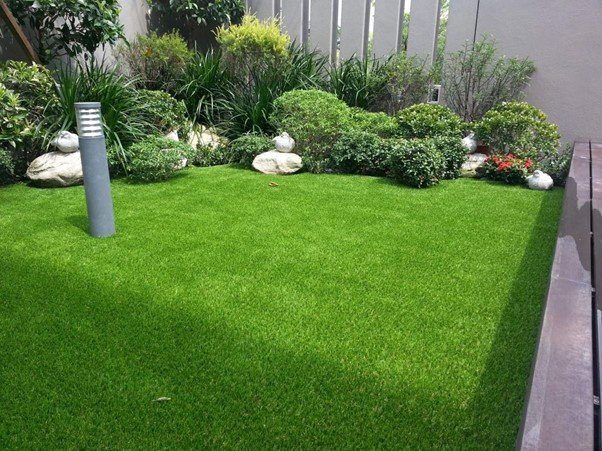
What is Natural Grass?
Imagine a green carpet that grows outside! That’s natural grass. It’s like a living plant with many different types, kind of like how there are many kinds of flowers.
It has long, thin leaves (like blades) that sprout from the ground. Underneath the soil, there’s a whole network of roots that hold the grass in place and help it drink water. Just like us, grass needs stuff to grow: sunshine, water, and food for plants (nutrients).
Different Types of Grass
Just like there are different colored candies, there are many types of natural grass! Some types do well in hot places, while others prefer cooler weather. Some grasses are really soft, while others are a bit tougher. Here are a few common types:
Bermuda grass: This grass likes it hot and sunny!
Kentucky bluegrass: This grass is comfy for bare feet and loves cooler weather.
Fescue: This grass is tough and can handle a bit of shade.
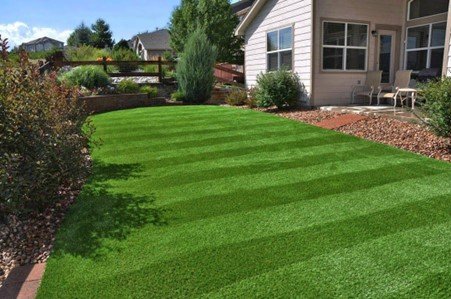
Keeping Grass Happy
Grass grows by using sunlight like a superpower! It changes the sunlight into energy to help it get big and strong. To keep your grassy carpet healthy, you need to take care of it. This means:
Mowing it regularly: This keeps the grass at a good height and helps it grow nice and even.
Watering it: Grass gets thirsty too! Watering helps it stay green and healthy.
Feeding it: Fertilizer is like giving your grass vitamins. It helps it grow strong and fight off weeds.
Weeding it: Sometimes unwanted plants try to grow in your grass. Pulling them out (weeding) keeps your grassy carpet looking neat.
Benefits of Artificial Grass
No more mowing: Forget spending hours pushing a mower! Artificial grass stays neat and tidy without cutting.
Say goodbye to watering: No more sprinkler fights! Artificial grass doesn’t need water to stay green, which is great for places with less rain.
Skip the fertilizer: Artificial grass doesn’t need any special food to grow.
Benefits of Natural Grass
Environmental Benefits
Natural grass offers numerous environmental benefits. It absorbs carbon dioxide, produces oxygen, and helps cool the surrounding air. A healthy lawn can also improve soil quality and reduce erosion.
Aesthetic Appeal
Many people prefer the look and feel of natural grass. Its vibrant color and soft texture can enhance the beauty of your yard design, creating a welcoming outdoor space.
Recreational Benefits
Natural grass provides a comfortable surface for outdoor activities. It’s ideal for playing sports, hosting picnics, or simply relaxing in your yard.
Drawbacks of Artificial Grass
Cost:
Getting it installed can cost a bunch upfront, like a new video game system. But just like you don’t have to buy new games all the time, you won’t need to spend as much on watering it or mowing it over time!
Earth:
Regular grass is kind of like a mini house for tiny creatures like worms and butterflies. Fake grass, since it’s plastic, isn’t as good for them. Also, making fake grass uses plastic, which isn’t great for the environment.
Heat:
Fake grass can get super hot in the summer, like a giant black frying pan under the sun! There are special kinds of fake grass that can help with this, though.
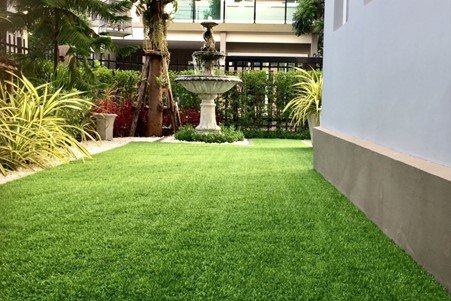
Drawbacks of Natural Grass
Chores, Chores, Chores:
Just like you wouldn’t want your pet to be messy, you need to mow the lawn regularly to keep it neat. Watering, feeding it with fertilizer (like vitamins for plants!), and pulling weeds are also part of the deal. This can take a lot of time, especially if you have a big yard.
Thirsty Grass:
Lawns love water, but they can drink a lot, especially in hot places. This can mean higher water bills for you, and less water left over for other things during droughts.
Not-So-Nice Chemicals:
Sometimes, you might need to use bug sprays and plant food to keep your lawn healthy. But these can be bad for the environment and hurt little creatures living around your house.
Cost Comparison
Initial Investment
Artificial grass typically involves a higher upfront cost due to the materials and installation process. Natural grass, on the other hand, is less expensive to install but requires ongoing investment in maintenance.
Long-Term Costs
Over time, the lower artificial grass maintenance cost can make it more economical. Natural grass, while cheaper initially, can become more expensive due to the continuous need for care and resources.
Value for Money
When considering value for money, it’s important to factor in both initial and long-term costs, as well as personal preferences and environmental impact.
Installation Process
Thinking about turning your dirt patch into a cool green zone? There are two main ways to go: artificial grass (like a big green carpet) or real grass that you grow yourself.
Putting in Fake Grass:
Imagine building a playground! First, you gotta clear out the area and make the ground flat. Then, you put down a special layer like crushed rock, kind of like the base for a slide.
Finally, you unroll the fake grass and secure it with staples, like holding down a blanket for a picnic.
It’s a lot of steps, but you can do it yourself if you have the grown-up tools and know-how, or you can call a pro to make it perfect.
Growing Real Grass:
Real grass is like raising a pet! You gotta prep the soil, which is like making a comfy bed for the grass seeds. Then, you either sprinkle tiny seeds or lay down grown grass patches (called sod) like puzzle pieces.
The most important part is watering it regularly, just like giving your pet water every day. It takes more work than fake grass, but watching your own green lawn grow is super cool!
Grown-up Help or Do-It-Yourself?
No matter if you pick fake grass or real grass, you can either get a grown-up (like a landscaper) to do the job, or you can try it yourself with some help.
Professionals will make sure everything looks amazing, but doing it yourself can save you money and make you feel proud of your awesome yard!
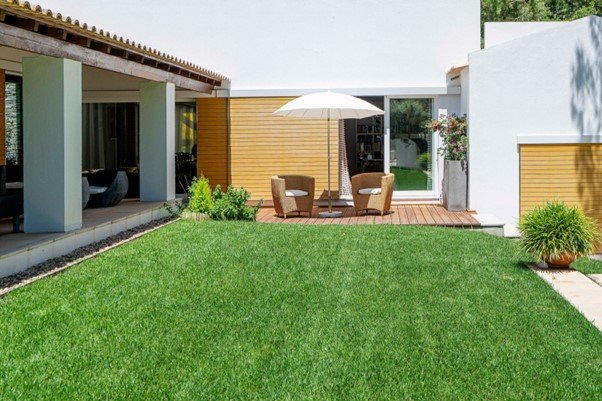
Maintenance Requirements
Routine Care for Artificial Grass
Artificial grass requires minimal care. Regular brushing, occasional rinsing, and prompt removal of debris can keep it looking great.
Seasonal Care for Natural Grass
Natural grass needs more attention, especially during growing seasons. This includes mowing, watering, fertilizing, and treating for pests and diseases.
Tips for Keeping Your Lawn Healthy
For artificial grass, keep it clean and free from heavy objects. For natural grass, follow a regular maintenance schedule, use quality fertilizers, and water deeply but infrequently.
Conclusion
When people talk about choosing between fake grass and real grass, there’s no perfect answer. Both have their own good and bad things. Fake grass is easy to take care of and saves water, so it’s great for people who don’t have much time or live in places where it doesn’t rain a lot.
FAQs (Frequently Asked Questions)
Artificial grass, also known as synthetic grass, is an artificial surface designed to look and feel like natural grass. It is typically made from synthetic fibers and can be used for landscaping, sports fields, and other applications.
Fake grass has been around since the 1960s and has evolved significantly over the years. It has become more realistic in appearance and improved in terms of durability and performance.
Natural grass refers to the type of grass that grows organically in outdoor environments. It requires regular maintenance such as watering, mowing, and fertilizing to keep it healthy and vibrant.
Artificial grass offers various benefits such as eliminating the need for mowing, reducing water consumption, and providing a low-maintenance lawn solution. It is also durable and can withstand heavy foot traffic.
One drawback of natural grass is the high maintenance it requires, including regular mowing, watering, and fertilizing. It can also be susceptible to damage from pests and extreme weather conditions.
The installation process for artificial grass involves preparing the ground, laying a base material, installing the turf, and securing it in place. It may require professional assistance for proper installation.
